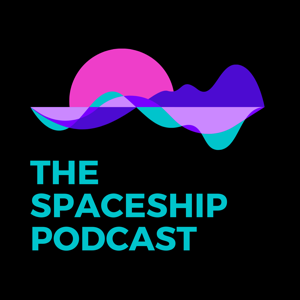Anna Várnai and Shuya Gong are two designers at the global design agency IDEO. They talk about what is Human Centered Design and how it goes with Planetary Design. IDEO uses Human Centered Design to create solutions with a positive impact and shape a global change.
Anna: We need to redefine the stories that we tell us, and if we see ourselves as part of nature, actually everything that serves humans and humanity, so it doesn't serve consumers or paying customers, but it actually serves humans, would hopefully also serve nature.
Laura: This is The Spaceship Podcast.
Clément: This podcast is brought to you by the special master class where we support change-makers and entrepreneurs in their journey to solving big challenges our planet is facing. Here we bring the theory to life by featuring thought leaders and impact entrepreneurs from around the world.
Laura: How do we design the future? How do we try to tackle the challenges the world is consistently facing, the human challenges and the environmental ones. Now, this is what we're talking about in this week's episode with our guests Anna Várnai and Shuya Gong from the global design agency IDEO.
Clément: Anna Várnai and Shuya Gong, so first of all, we are really glad to have you in the spaceship podcast. So thanks a lot and welcome.
Anna: Hey, thanks for having us.
Shuya: Yeah. So excited to be here.
Clément: You both work at IDEO, a global design company, known for its commitment to creative, positive impact, which is why we are so excited to speak to you both. And both of you work together, Anna you're a senior design lead, consultant and facilitator, and Shuya you are head designer at IDEO co-lab exploring how emerging tech and societal trends change systems.
Shuya: We're multi-purpose here.
Anna: Yeah, that's very true. It's usually hard to put it down, like to one title or two.
Laura: Why is it so hard to have one title when you're doing what you're doing? Or maybe even describe what you're doing. If you had to pick one title right now,
Anna: I would pick the title of design researcher and in a way I sometimes describe it that is part-time reporter, part-time storyteller or anthropologist and therapists. So I think that already might give you an answer why it's hard to like put it into one role because depending on the project and the challenge, there are different skillsets that are needed and different roles I step into.
But usually in one sentence for a living, I try to understand why people do the things they do and how we can design better products, services, or systems that actually resonate with them and help them thrive in the end
Laura: Does design in the way you're both talking about it, is this a more democratic way of thinking about the word design?
There are boundaries to it and the way you're speaking about it, it seems like it's something that's just everywhere. You can design anything. You can design the way you pour your tea into your mug. Can you just maybe elaborate a little bit on that?
Anna: There are two ways how I think about it, and there's one way when I see the word of "to design", I think that is an innate human capability that every one of us is designing if we're changing the state of something. So in a way it's understanding what's the current state and changing it to a different state. And then through the history of design as a practice, it professionalized. It was industrial revolution, so design was very much about white Western people making stuff and product.
Now we realize how much trouble it also causes, and what are the negative effects of designing if you don't
















